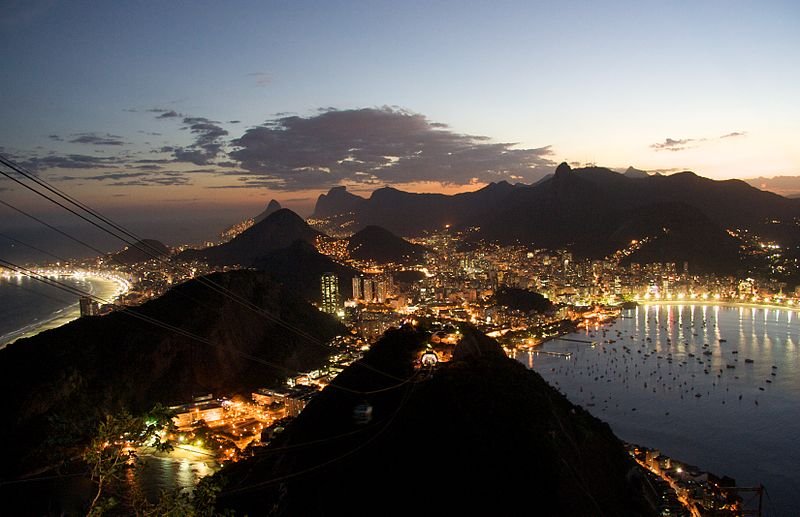 Rio de Janeiro, Brazil
Rio de Janeiro, BrazilSource: https://commons.wikimedia.org/wiki/File:Rio_de_Janeiro_night.jpg
Author: mark goble

Rio de Janeiro is the second biggest city in Brazil. Located on the Atlantic coast, it is the capital of Rio de Janeiro State. The city covers 1,260 sq km (486.5 sq mi) and has a population of 6.3 million people (2011 estimate). It is within a metropolitan area with about 12 million inhabitants. Commonly known as Rio, it is the third largest metropolitan area in South America, and the six largest in the Americas.
Rio de Janeiro is on a stretch of the Atlantic coast that faces south. The city center, called Centro, is located on the west coast of an inlet called Baía de Guanabara or Guanabara Bay. Right at the entrance to the islet is a promontory called Pão de Açúcar, popularly known in English as Sugar Loaf.
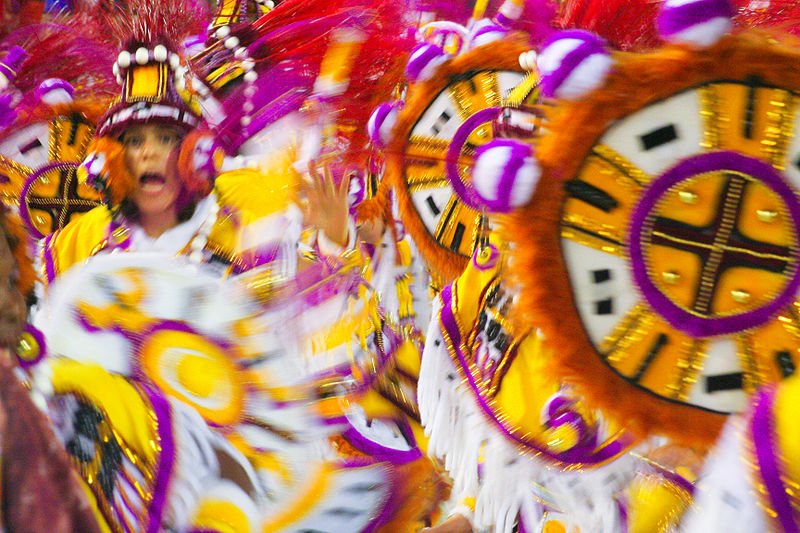 Carnival in Rio
Carnival in RioSource: https://commons.wikimedia.org/wiki/File:Carnival01.jpg
Author: Diogo Dubiella

A stretch of coastal mountains split Rio de Janeiro into two parts. The area around Centro is called Zona Norte, or north zone. Much of the metropolitan area of Rio de Janeiro is spread out from here in a northwest direction, to include neighbouring cities such as Duque de Caxias, São João de Meriti, Belford Roxo and Nova Iguaçu.
Between the Atlantic and the coastal mountains is Rio's Zona Sul, or south zone. This is where you find some of Rio's most famous beaches such as Copacabana and Ipanema.
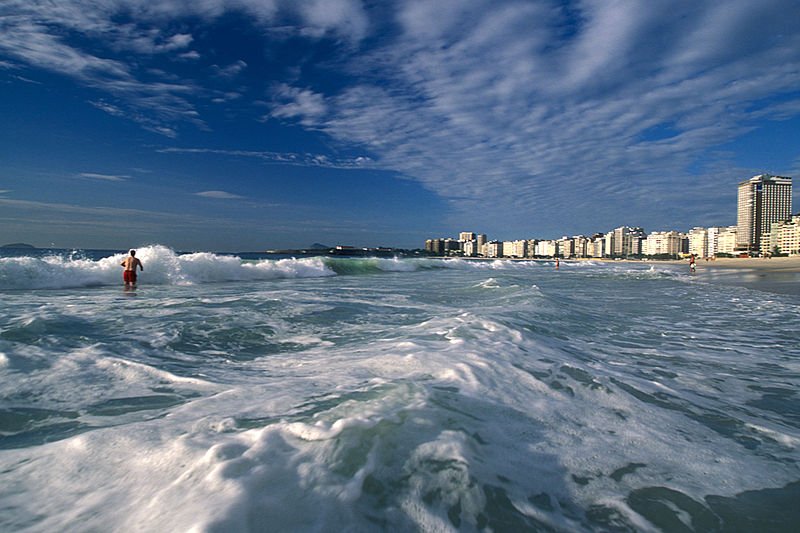 Copacabana Beach, Rio de Janeiro
Copacabana Beach, Rio de JaneiroSource: https://commons.wikimedia.org/wiki/File:Copacabana_Beach.jpg
Author: LASZLO ILYES

The first European to discover the Rio de Janeiro area was Portuguese explorer Gaspar de Lemos, on 1 January, 1502. The discovery of the inlet, thought to be a river mouth, in January, let the place to be called Rio de Janeiro, meaning "January river".
The earliest settlement in the area was that of French admiral Nicolas Durand de Villegaignon, on Villegagnon Island, in 1555. This was followed by the founding of the city of Rio de Janeiro by the Portuguese on 1 March, 1565. It was originally named São Sebastião do Rio de Janeiro, in hobor of St Sebastian, who is also the namesake and patron of the then Portuguese king, D. Sebastião.
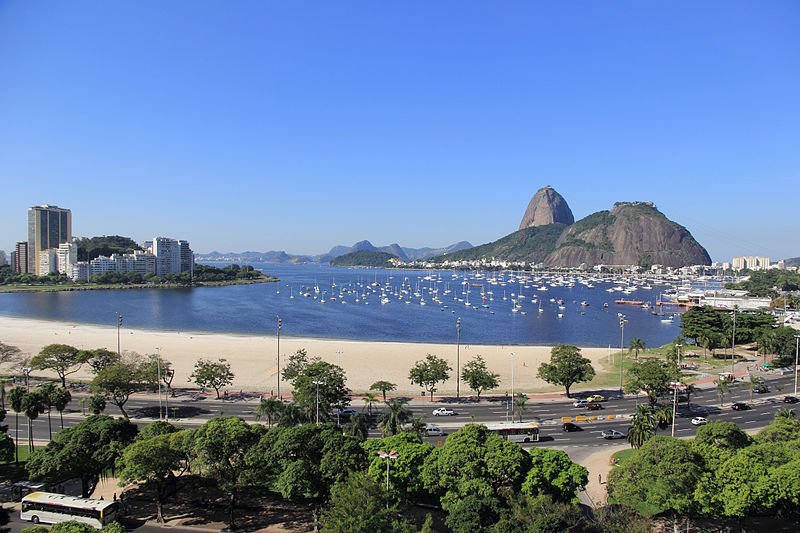 Praia de Botafogo, the famous bay in Rio de Janeiro
Praia de Botafogo, the famous bay in Rio de JaneiroSource: https://commons.wikimedia.org/wiki/File:Vista_do_Botafogo_Praia_Shopping_01.jpg
Author: Halley Pacheco de Oliveira

Rio de Janeiro became the capital of Brazil when Prince Pedro I proclaimed its independence in 1822. It continued to serve as the capital when Brazil became a republic in 1889, remaining so until Brasília was built to be the capital of Brazil in 1960. Rio de Janeiro was part of the State of Guanabara from 1960 until 1975, when it was merged with the State of Rio de Janeiro.
Rio de Janeiro will host the Olympic Games in 2016, becoming the first South American city and the second Latin American city (after Mexico City in 1968) to have gained that honor.
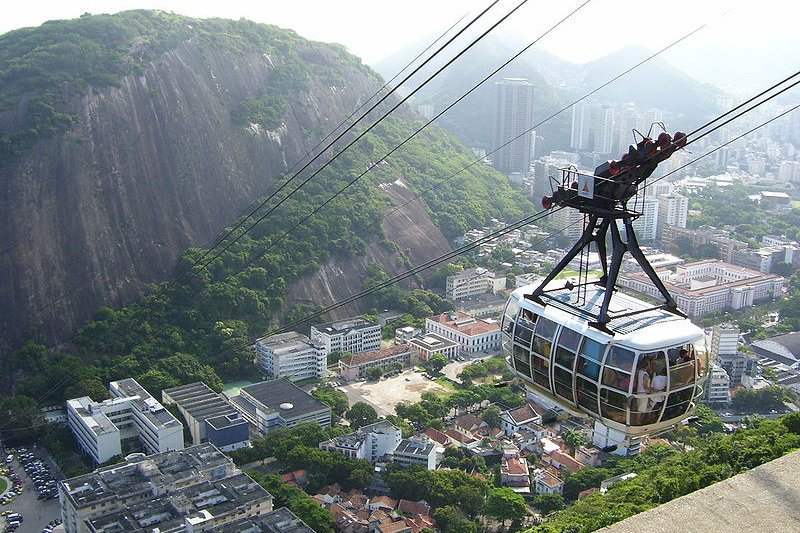 A cable car descends Morro da Urca with the buildings of Rio's south zone in the background
A cable car descends Morro da Urca with the buildings of Rio's south zone in the backgroundSource: https://commons.wikimedia.org/wiki/File:Bondinho_descendo_o_Morro_da_Urca.jpg
Author: Arthur Jacob

Visiting Rio de Janeiro, Brazil
The Galeão International Airport (GIG, also called Aeroporto Internacional Antônio Carlos Jobim, after a famous Brazilian musician) is the main international gateway to Rio de Janeiro, and the second busiest international airport in Brazil. The airport, located on Governador Island, in Guanabara Bay. Exiting the Arrival Hall, you can catch a bus to downtown Rio. They run one every 30 minutes from 5:30 am to 10:00 pm.The most economical taxis are the yellow ones located some hundred meters from the Arrival Hall. They cost R$40 by the meter to reach Copacabana. The more luxurious limousine taxis are also available at the taxi counters, priced about double the regular ones.
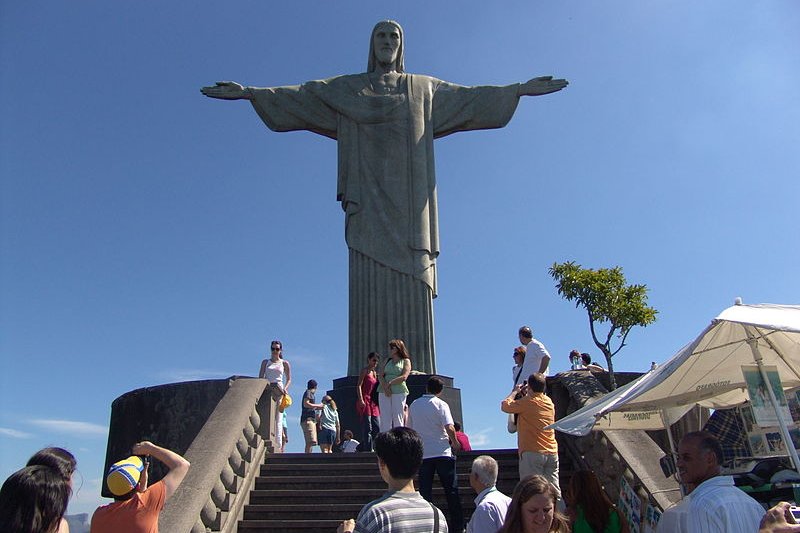 Christ the Redeemer Statue, Rio de Janeiro
Christ the Redeemer Statue, Rio de JaneiroSource: https://commons.wikimedia.org/wiki/File:ChristusbeeldInDeMaandAprilVan2007.png
Author: Ischa1

If you're coming in from another Brazilian city, you are most likely to arrive at the city airport, Santos Dumont Airport (SDU) located close to downtown Rio.
Exploring Rio
The cheapest mode of transport would be the bus, especially if you are traveling only short distances within the city. You can pay by cash on the bus itself, to the attendant or driver. Try to bring exact change - or small bills - as change may not be provided. Bus fare starts from R$2.20. Taxis are of course more convenient, if you are willing to pay for it. Fares start at R$4.40, with additions of R$1.60 for every kilometer.Rio de Janeiro's biggest attractions
- Christ the Redeemer Statue
- Copacabana Beach
- Ipanema Beach
- Sugar Loaf (Pão de Açúcar)
Other places of interest in Rio de Janeiro
- Arcos da Lapa (Lapa Aqueduct)
- Biblioteca Nacional (National Library)
- Câmara Municipal (City Hall)
- Candelária Church
- Catedral Metropolitana
- Centro Cultural Banco do Brasil
- Casa França Brasil (French Cultural Centre)
- Corcovado Funicular Train
- Gloria Church
- Ilha Fiscal Palace
- Itamaraty
- Lagoa Rodrigo de Freitas
- Maracanã Stadium
- Mosteiro de São Bento (St Benedict's Monastery)
- Museu Aeroespacial (Aerospace Museum)
- Museu Carmen Miranda (Carmen Miranda Museum)
- Museu Casa do Pontal
- Museu Chácara do Céu
- Museu da Imagem e do Som (Museum of Image and Sound)
- Museu da República (Museum of the Republic)
- Museu de Astronomia e Ciências Afins (Museum of Astronomy and Related Sciences)
- Museu de Arte Moderna (Museum of Modern Art)
- Museu do Carnaval (Carnival Museum)
- Museu do Índio
- Museu do Primeiro Reinado
- Museu do Trem (Train Museum)
- Museu Internacional de Arte Naïf (International Naïf Art Museum)
- Museu Histórico Nacional (National Museum of History)
- Museu Nacional
- Museu Nacional de Balas Artes (Museum of Fine Arts)
- Museu Naval (Navy Museum)
- Museu Villa-Lobos
- Oi Futuro
- Paço Imperial (Old Imperial Palace)
- Palácio do Catete (former presidential palace)
- Palácio Guanabara
- Palácio Gustavo Capanema
- Parque Lage
- São Francisco da Penitência Church
- Teatro Municipal
Districts of Rio
- Centro
- Zona Sul (South Zone)
- Zona Norte (North Zone)
- Zona Oeste (West Zone)
 Latest updates on Penang Travel Tips
Latest updates on Penang Travel Tips
Songs about Penang
About this website

Hello and thanks for reading this page. My name is Timothy and my hobby is in describing places so that I can share the information with the general public. My website has become the go to site for a lot of people including students, teachers, journalists, etc. whenever they seek information on places, particularly those in Malaysia and Singapore. I have been doing this since 5 January 2003, for over twenty years already. You can read about me at Discover Timothy. By now I have compiled information on thousands of places, mostly in Peninsular Malaysia and Singapore, and I continue to add more almost every day. My goal is to describe every street in every town in Malaysia and Singapore.
Copyright © 2003-2024 Timothy Tye. All Rights Reserved.


 Go Back
Go Back